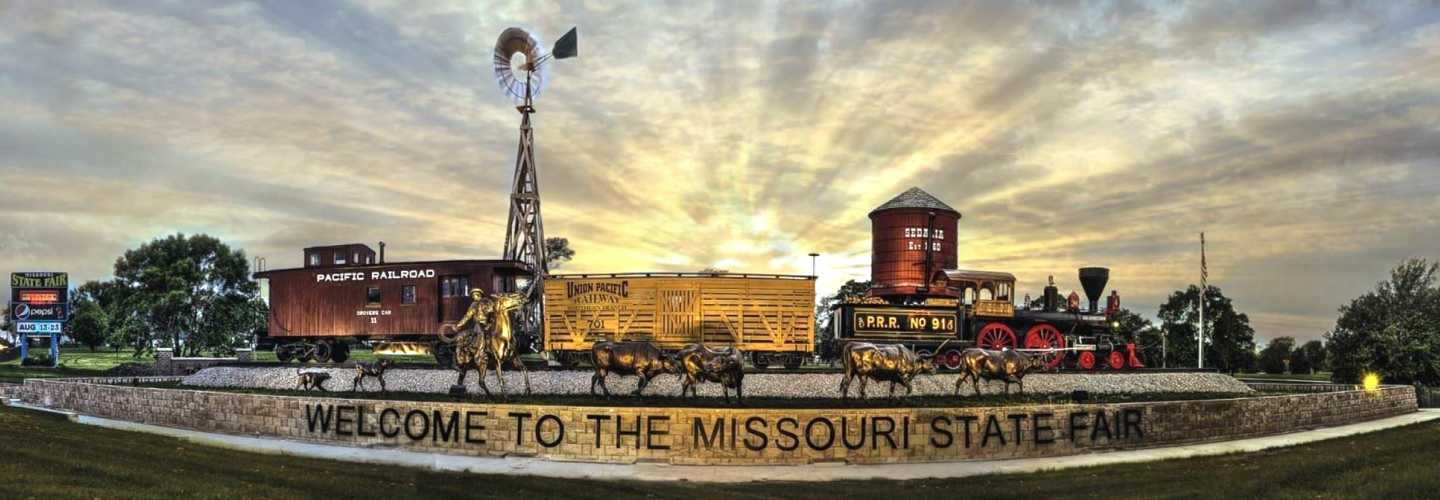
Rails and Cattle Trails Timeline
Learn how the railroad and cattle drives intersect throughout history
A History of Railroads and Cattle Drives
1804
Lewis and Clark explored the Missouri River region from St. Louis to the Pacific Ocean.
1836
The first immigrant wagon train left Independence, Missouri, for Oregon Territory on what became known as the Oregon Trail.
1840s
In the 1840s, the plains were considered the Great American Desert, and initially, the U.S. Government set the land aside as Indian Tribal land. It was effectively illegal to homestead on the plains until well after 1846. Oregon, on the other hand, offered free, fertile land, uncut forests, potential seaports, and a more disease-free climate than the Missouri or Mississippi River Valleys.
1845
Texas became the 28th state in the United States of America.
1846
The Oregon Treaty with Great Britain set the boundary between Oregon Territory and Canada at the 49th parallel.
1846 - 1848
The Mexican-American War ended with the signing of the Treaty of Guadalupe Hidalgo in February 1848. Under its terms, Mexico ceded the Alta California Territory and gave up claims to various territories, including Texas, Kansas, Colorado, Wyoming, and Oklahoma.
1848
James W. Marshall discovers gold at John Sutter's Mill near Coloma, California, on the American River.
1849
The California Gold Rush began, and for the "49ers," it was "California or Bust." Meanwhile, St. Louis business leaders charter the Pacific Railroad.
1850s
California was admitted to the United States of America as part of the Compromise of 1850.
Missouri and Kansas territories close their borders to Texas cattle due to outbreaks of Texas fever, a tick-borne disease.
1851
The Pacific Railroad held groundbreaking ceremonies in St. Louis, marking the westward march of the railroad tracks.
December 1852
The inaugural run from the St. Louis depot to Cheltenham covered a distance of five miles.
July 1853
The run from the St. Louis depot was extended to Franklin, now called Pacific, a distance of 38 miles.
December 1853
As a result of the Gadsden Purchase, the U.S. bought the southern parts of New Mexico and Arizona from Mexico for $10,000,000, providing a potential southern railroad route.
1854 - 1890
The Indian Wars, characterized by cavalry skirmishes and small battles, occurred as settlers moved west, often clashing with Native American tribes.
February 1855
The rails from the St. Louis depot extended to Washington, 18 miles west of Franklin, totaling 56 miles.
December 1855
The Pacific tracks were extended from Washington to Jefferson City, adding 75 more miles to the line, totaling 131 miles.
1857
Financial panic and the Border War with Kansas slowed the construction of the Pacific Railroad.
July 1858
The Pacific Railroad reached Tipton, adding another 29 miles of track, bringing the total to 160 miles.
1859
The Pikes Peak Gold Rush caused an influx of miners and settlers to Colorado's front range.
1860
A bill for a transcontinental railroad through the Rockies was proposed, passing the House but dying in the Senate.
1861
Confederate troops fired on Fort Sumter, starting the Civil War, halting construction on the Pacific Railroad for three years.
1862
The Homestead Act was signed by President Lincoln, granting land to applicants who met specific requirements.
1863
The Bozeman Trail connected Virginia City, Montana, to the Oregon Trail, passing through Indian Territory, leading to conflicts with Native American tribes.
1864
Union Pacific eastern rails reached Lawrence, Kansas, and Pacific Railroad tracks reached Warrensburg from Sedalia.
1865
General Lee surrendered to General Grant at Appomattox, ending the Civil War.
1866
The era of large-scale cattle drives from Texas to railheads in Missouri and Kansas began, driving an estimated 260,000 head of cattle up the trail.
1867
Joseph McCoy opened his Great Western Stockyard at Abilene, Kansas, a key hub for cattle drives and the Kansas Pacific Railroad.
1868
The first successful barbed wire fencing material was introduced.
1869
The first American Transcontinental Railroad connection was completed at Promontory Point, Utah.
1870
The Missouri-Kansas-Texas Railroad (the "Katy") was incorporated, connecting Sedalia, Missouri, to deep within Texas.
1871
The Kansas City Livestock Exchange and Stockyards opened, becoming a major market for cattle.
1872
The Atchison, Topeka, and Santa Fe Railroad reached Dodge City, Kansas, becoming the end of the Great Western Cattle Trail.
1874
The Eads Bridge at St. Louis crossed the Mississippi River, enabling direct railroad connections between railroads on both sides of the river.
1879
Jay Gould bought control of the Missouri Pacific, adding it to his network of rail lines known as the Southwest System.
1880s
Railroads dominated prairie commerce, dictating prices and determining which towns survived.
1886
The Missouri-Kansas-Texas Railroad reached Dallas, Texas, ending the era of large-scale Texas cattle drives.
1888
The "Katy" became part of the Union Pacific.
Later Cattle Drives
Although cattle drives still moved stock from pasture to pasture within large ranches and from ranch to local railheads, those drives were of short duration, generally involved much smaller herds, and only covered a few miles compared to those from the heyday of the cattle drives – 1866-1886. Some drives are still held to this day, and the romance and the indomitable spirit of the cowboy and the legend of the cattle drive will live on forever
